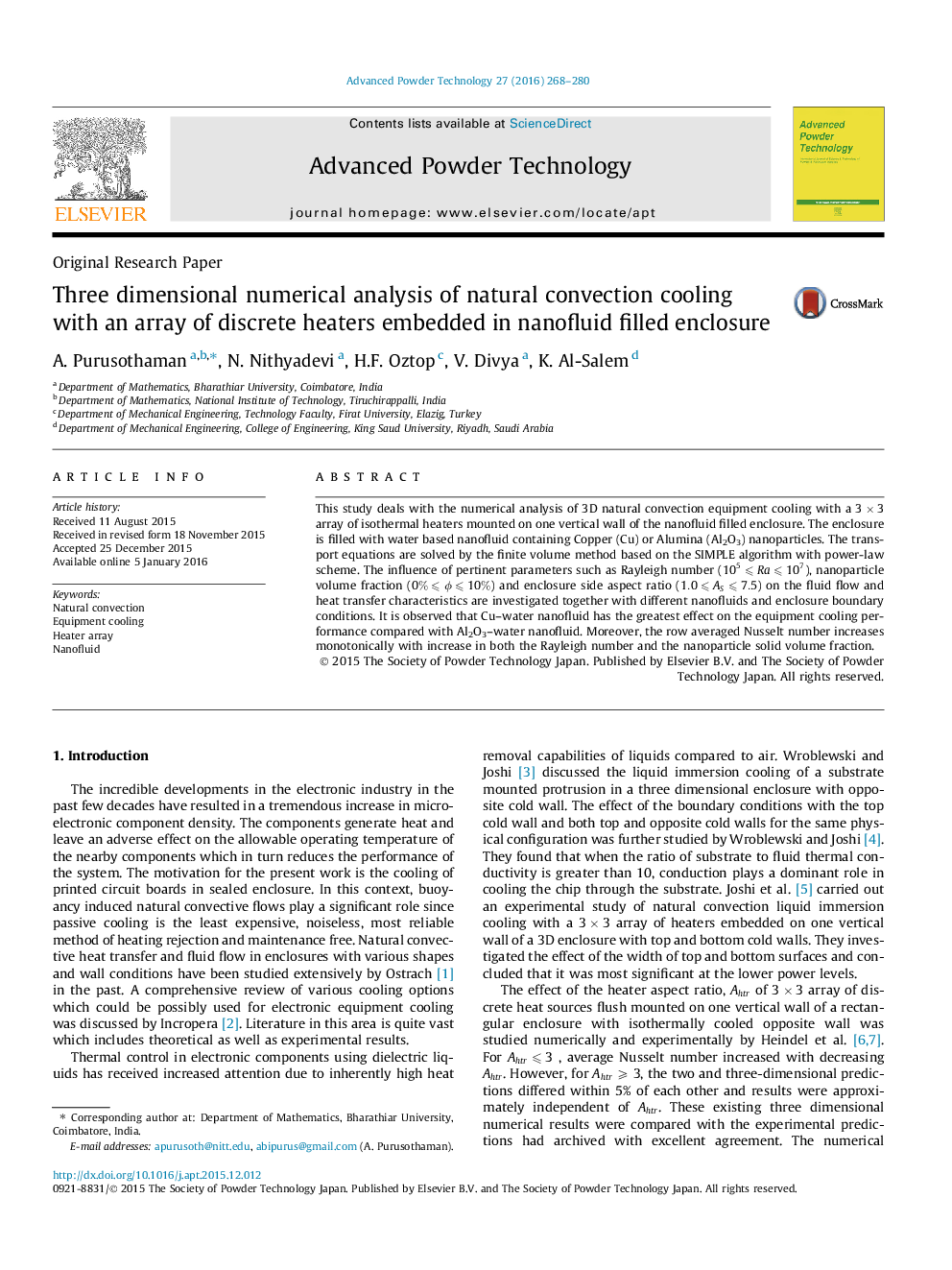| Article ID | Journal | Published Year | Pages | File Type |
|---|---|---|---|---|
| 144288 | Advanced Powder Technology | 2016 | 13 Pages |
•3D natural convection equipment cooling is performed with the effect of nanofluids.•Benchmarking the developed code with the existing numerical models.•Increasing the solid volume fraction yields a better heat transfer rate than water.•Effect of thermal performance on Cu–water is greater than Al2O3–water nanofluid.•Thermal efficiency and reliability of equipments are achieved through nanofluids.
This study deals with the numerical analysis of 3D natural convection equipment cooling with a 3 × 3 array of isothermal heaters mounted on one vertical wall of the nanofluid filled enclosure. The enclosure is filled with water based nanofluid containing Copper (Cu) or Alumina (Al2O3) nanoparticles. The transport equations are solved by the finite volume method based on the SIMPLE algorithm with power-law scheme. The influence of pertinent parameters such as Rayleigh number (105⩽Ra⩽107105⩽Ra⩽107), nanoparticle volume fraction (0%⩽ϕ⩽10%0%⩽ϕ⩽10%) and enclosure side aspect ratio (1.0⩽AS⩽7.51.0⩽AS⩽7.5) on the fluid flow and heat transfer characteristics are investigated together with different nanofluids and enclosure boundary conditions. It is observed that Cu–water nanofluid has the greatest effect on the equipment cooling performance compared with Al2O3–water nanofluid. Moreover, the row averaged Nusselt number increases monotonically with increase in both the Rayleigh number and the nanoparticle solid volume fraction.
Graphical abstractFigure optionsDownload full-size imageDownload as PowerPoint slide
